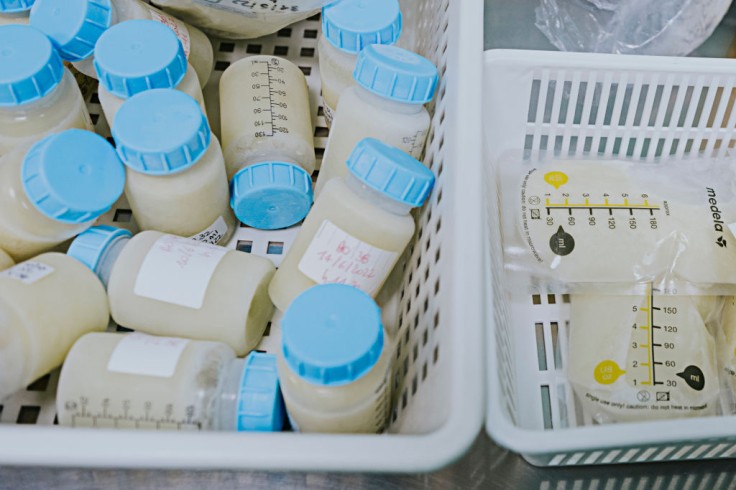
Mother Nature's nourishment, breast milk, has always been a source of wonder. Apart from being your baby's primary source of nutrition, did you know it often showcases a delightful palette of colors?
Is It Normal for Breast Milk to Change Color?
Absolutely! Just as each mother and baby pair is unique, so too is the milk produced.
During the first few weeks after you have your baby, your breast milk changes quickly. Not only in composition and amount, but also in color.
What you eat can influence the hue of your milk, leading it to appear green, pink, or even reddish.
Occasionally, traces of blood can find their way into the milk, resulting in a brown or rusty appearance.
It's intriguing to observe that the shade of your breast milk can vary not just over weeks or months but even during a single day or within one feeding session.
Naturally, this raises questions about the typical color of breast milk and its implications. But what do these colors signify, and is there cause for concern? In this article, we'll explore the fascinating world of breast milk color and its potential meanings.
Breast Milk Color Meaning
1. Colostrum: The Golden First Milk
When your baby is born, the initial milk they receive is called colostrum. Often described as "liquid gold," this breast milk color is typically yellow to orange. Rich in antibodies, colostrum is concentrated nutrition that helps bolster a newborn's immune system.
2. Transitional Milk: The Shift to a Creamy Hue
After a few days, as your milk supply increases, the color of your breast milk starts to change. This is called transitional milk. It might look creamier and less yellow than colostrum. It's a mix of colostrum and mature milk and contains high levels of fat, lactose, and vitamins, perfect for your growing baby.
3. Mature Milk: The Variations of White
A couple of weeks postpartum, most mothers will produce what is termed mature milk. At this stage, the breast milk color can range from bluish-white to a deeper, creamy hue. Mature milk is balanced in fats, proteins, and other essential nutrients. Interestingly, the fat content (and thus the creaminess and color) can vary throughout a feed:
Foremilk: At the start of a feed, the milk is often more diluted and can appear bluish. This is called foremilk, and it quenches your baby's thirst.
Hindmilk: As the feeding progresses, the milk becomes creamier and richer in fat. This is known as hindmilk and is vital for weight gain.
4. When You Eat Greens: Slight Green Tinge
Sometimes mothers are surprised to find a greenish tint to their milk. If you've been indulging in a lot of green foods, like spinach, seaweed, or algae, this can influence your breast milk color. There's no need to worry; it's just a reflection of your diet.
5. Pink or Rusty Milk: After a Feed or Due to Diet
If you've eaten beets or foods with bright artificial colors, your milk might take on a pinkish or rusty hue. Additionally, after breastfeeding, tiny amounts of blood from cracked nipples can cause a pink or rusty tint. If this happens occasionally, it's harmless. However, if it's persistent, you should consult a healthcare professional.
6. Clear or Blue Milk: High in Lactose
Have you ever noticed a clear or slightly blue tinge to your milk? This breast milk color indicates a higher concentration of lactose, which is great for energy. The blueish hue is most apparent in the foremilk, as mentioned earlier.
Breastfeeding Journey
Breast milk's shifting hues are a testament to its dynamic nature, adapting and evolving to cater to your baby's needs.
While these color shifts are typically benign, reflecting your unique journey and diet, it's essential to stay observant.
If something feels amiss, trust your instincts and seek guidance. After all, you and your milk are doing an incredible job nurturing a new life.
Related Article : Best Protein Boosts for Pregnant Moms: Top 5 Powders You Can Trust